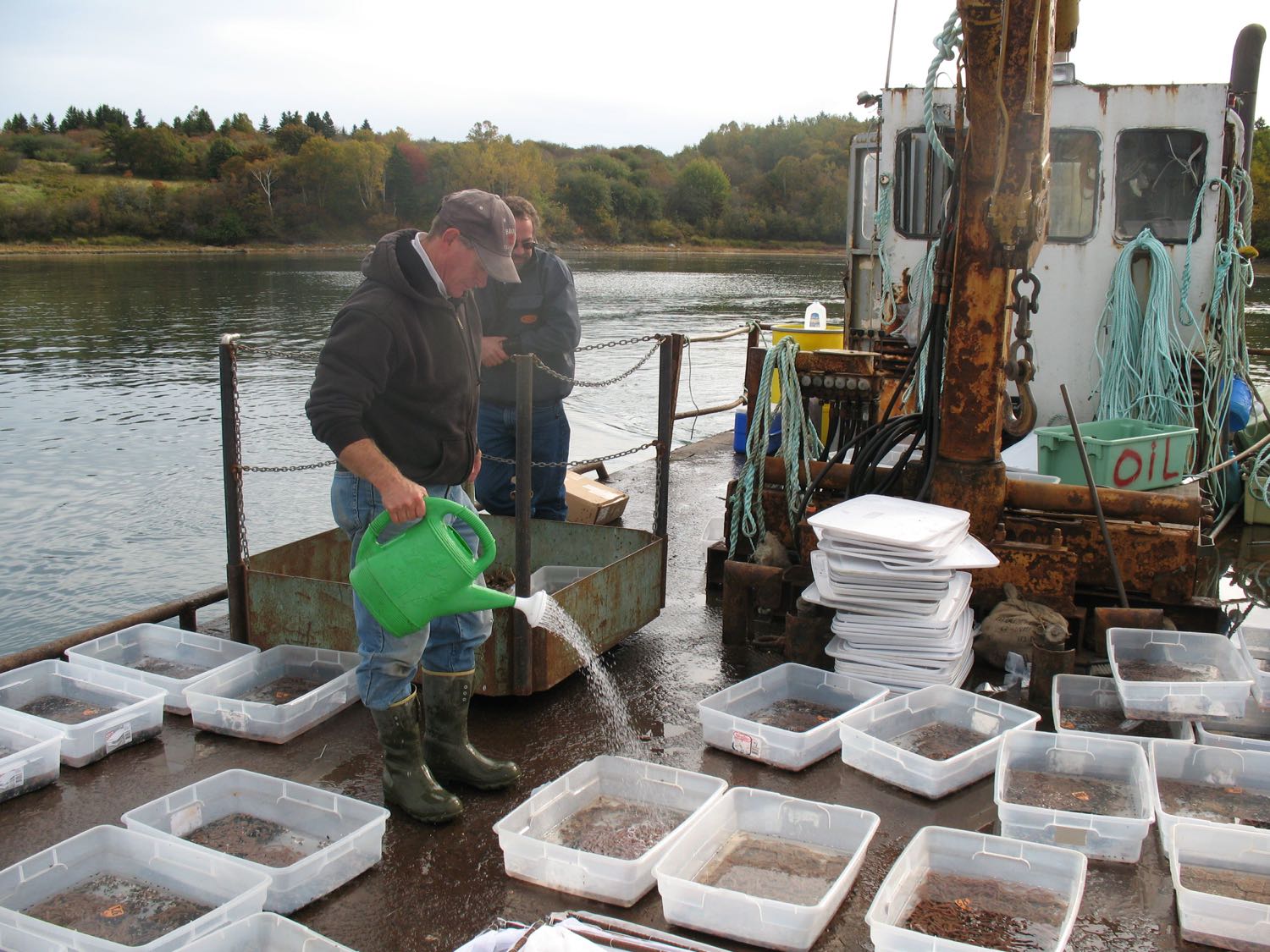
Integrated MultiTrophic Aquaculture Center for Cooperative Aquaculture Research University
Integrated multi-trophic aquaculture (IMTA) has the potential to play a role in reaching these objectives by cultivating fed species (e.g., finfish or shrimps fed sustainable commercial diets) with extractive species, which utilize the inorganic (e.g., seaweeds or other aquatic vegetation) and organic (e.g., suspension- and deposit-feeders) exc.

(PDF) Assessing risks and mitigating impacts of harmful algal blooms on mariculture and marine
Integrated Multitrophic Aquaculture The recently described concept of IMTA provides an alternative approach for sustainable aquaculture. Intensive culture of fish or shrimp is now being practiced in many places as integrated units with seaweeds and mollusk culture.

Integrated multitrophic aquaculture in practice and in concept Download Scientific Diagram
Integrated multi-trophic aquaculture (IMTA) involves the culture of two or more aquatic species from different trophic levels to improve efficiency, reduce waste and provide ecosystem services, such as bioremediation FAO (2022). IMTA is the practice of combining,.
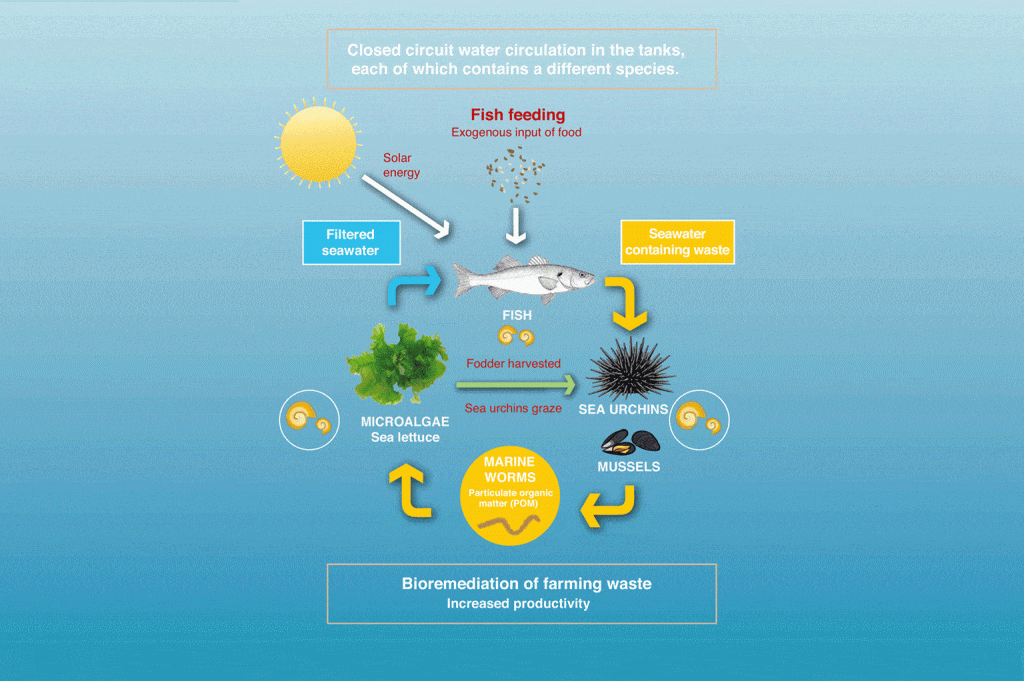
Integrated multitrophic aquaculture (IMTA) Institut océanographique Paul Ricard
The Integrated multi trophic aquaculture involving fed species with organic extractive species and Inorganic extractive species that utilize wastes from aquaculture for their growth. The IMTA.

Integrated MultiTrophic Aquaculture (IMTA) in Marine Temperate Waters
The integrated multi-trophic aquaculture (IMTA) is one of the production strategies that promotes synergistic interactions between species by combining trophic levels and utilizing.

What is Integrated MultiTrophic Aquaculture (IMTA) System? Sustainable Aquaculture Farming
IMTA is the intensive and synergistic cultivation using water-borne nutrients and energy transfer between various species occupying different trophic levels. It provides the byproducts including waste from one aquatic species as input (fertilizer, food) for another.
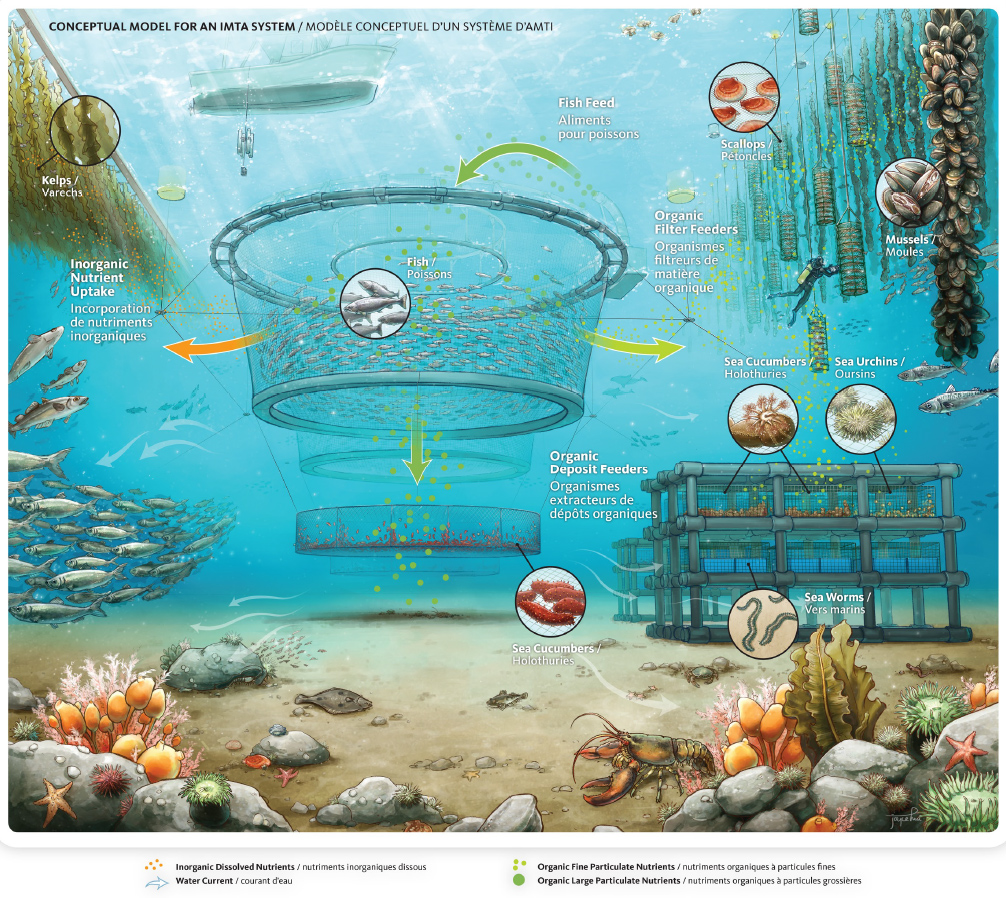
AQUACULTURE MULTITROPHIQUE INTÉGRÉE Les 4 Marais
Integrated Multi-Trophic Aquaculture (IMTA) systems are a circular economy paradigm that contribute towards making aquaculture more sustainable and competitive.

Integrated multitrophic aquaculture
Marine aquaculture in Canada: Well-established monocultures of finfish and shellfish and an emerging integrated multi-trophic aquaculture (IMTA) approach including seaweeds, other invertebrates, and microbial communities. Fisheries, 40 (1) (2015), pp. 28-31, 10.1080/03632415.2014.986571.
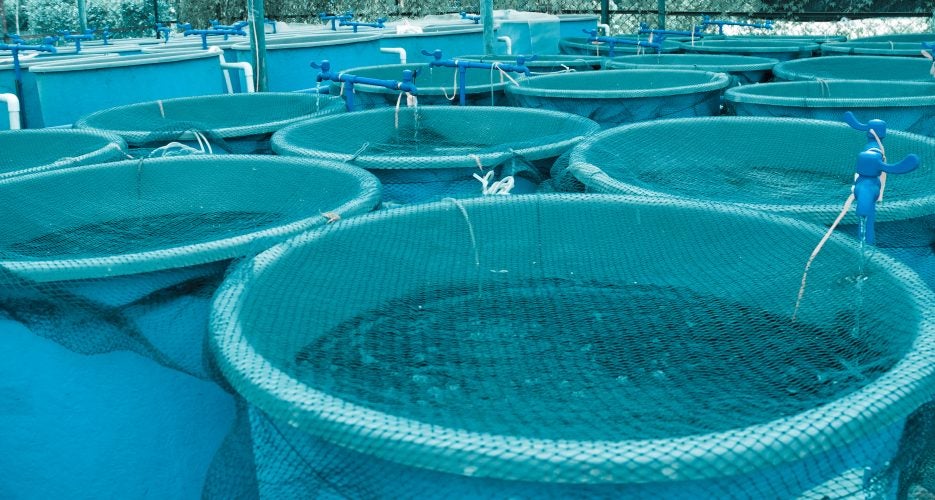
Integrated multitrophic aquaculture (IMTA) Institut océanographique Paul Ricard
Integrated Multi-Trophic Aquaculture Alternative Control Methods for Managing Sea Lice Integrated Multi-Trophic Aquaculture (IMTA) Over the past decade, scientists have studied ways to improve the productivity and environmental sustainability of marine aquaculture practices.

Figure 7 from The Application of Integrated Multi Trophic Aquaculture (IMTA) Using Stratified
The first U.S.-based workshop on integrated multi-trophic aquaculture (IMTA) took place in Port Angeles, Washington on September 14-15, 2010. The workshop attracted scientific experts and researchers along with aquaculturists from around the country. Among the suite of technologies needed to meet increasing demand for seafood, IMTA is a.
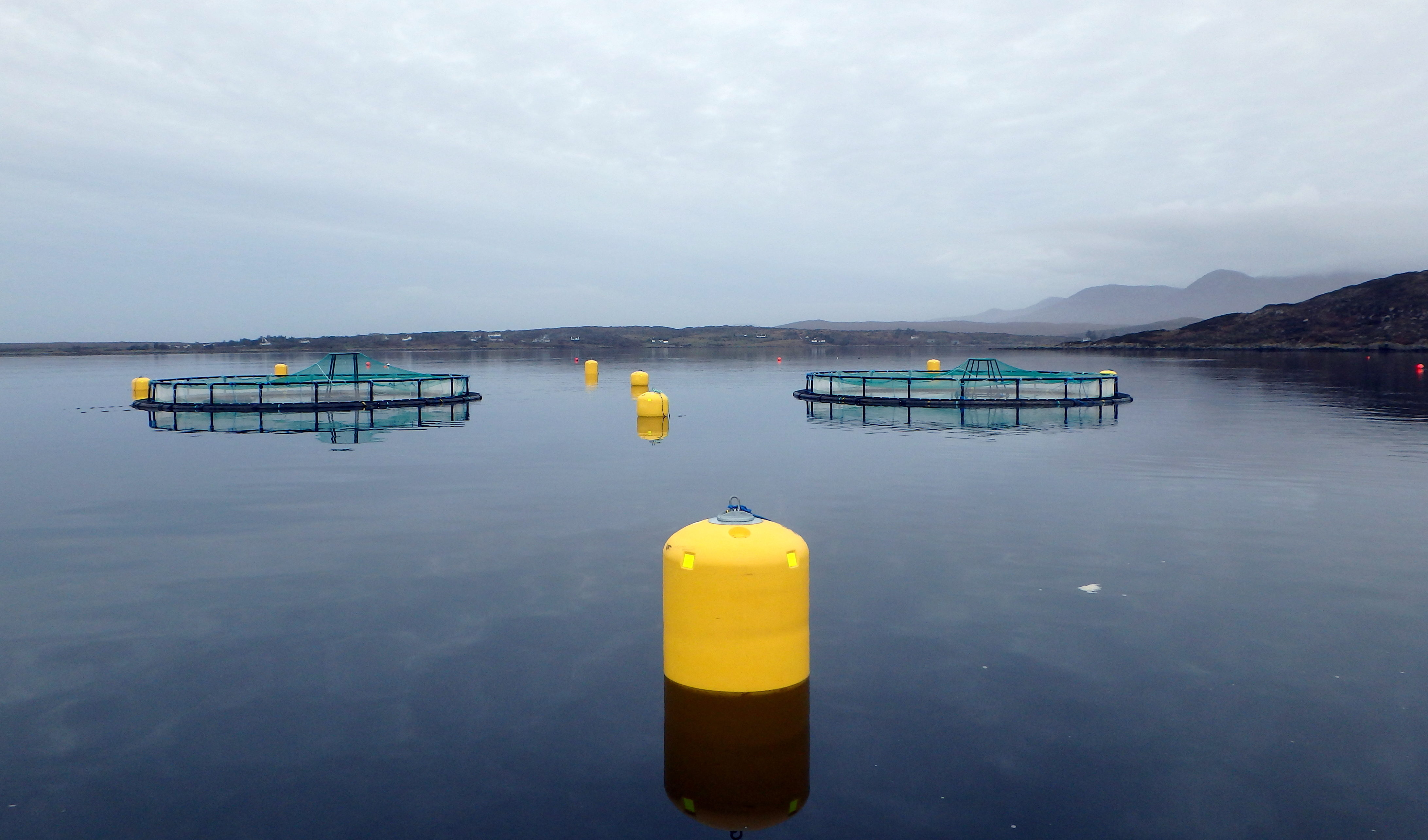
IMPAQT Intelligent Management Systems for Integrated MultiTrophic Aquaculture
Integrated multi-trophic aquaculture (IMTA) is the farming, in proximity, of species from different trophic levels and with complementary ecosystem functions in a way that allows one species' uneaten feed and wastes, nutrients and by-products to be recaptured and converted into fertilizer, feed and energy for the other crops, and to take advanta.
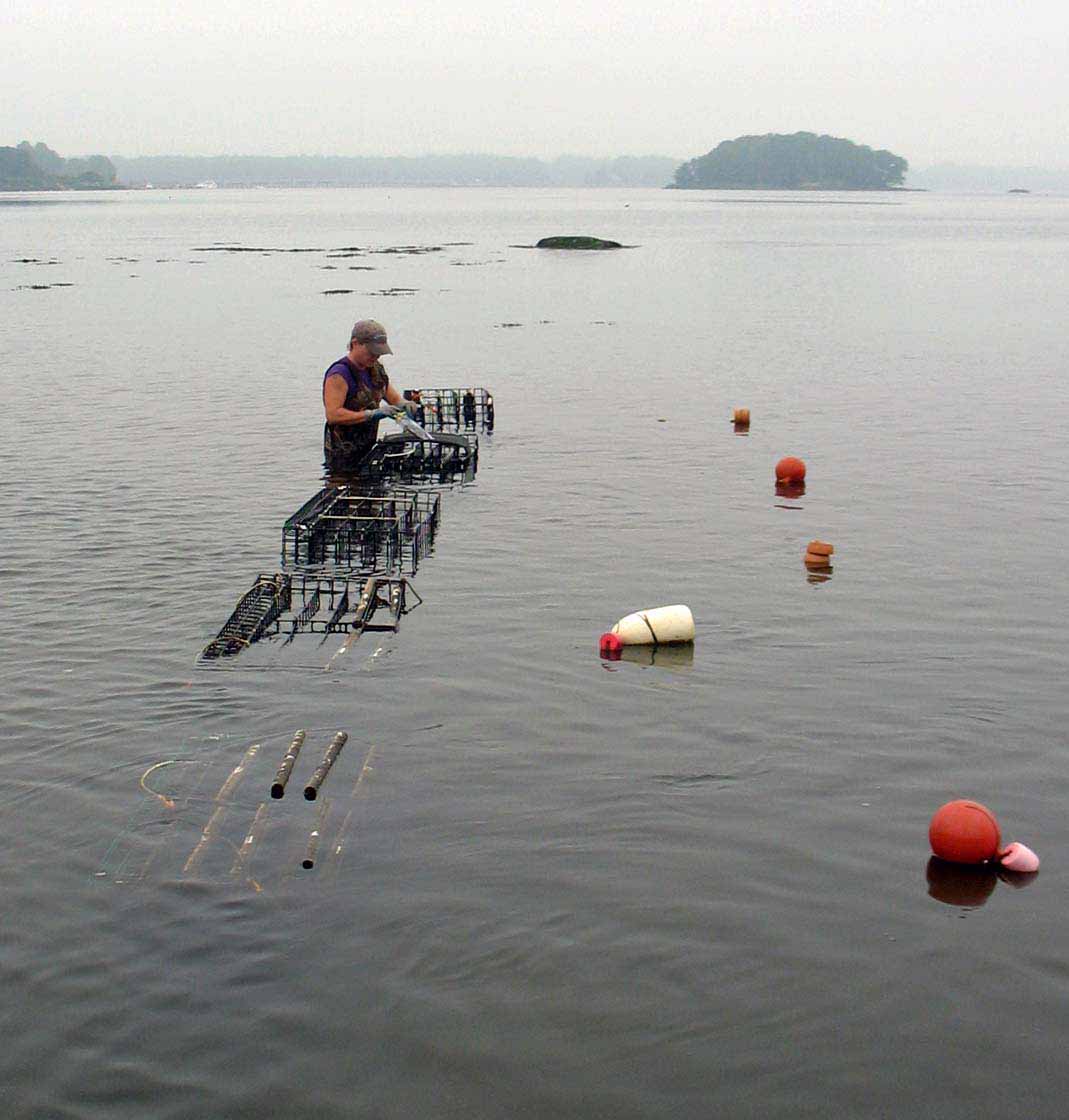
Integrated MultiTrophic Aquaculture (IMTA) School of Marine Science and Ocean Engineering
The integrated multi-trophic aquaculture (IMTA) concept was developed as a way to increase the sustainability of intensive aquaculture systems, using an ecosystem-based approach.

Schematic of an integrated multitrophic aquaculture (IMTA) example of... Download Scientific
Integrated multi-trophic aquaculture ( IMTA) provides the byproducts, including waste, from one aquatic species as inputs ( fertilizers, food) for another.
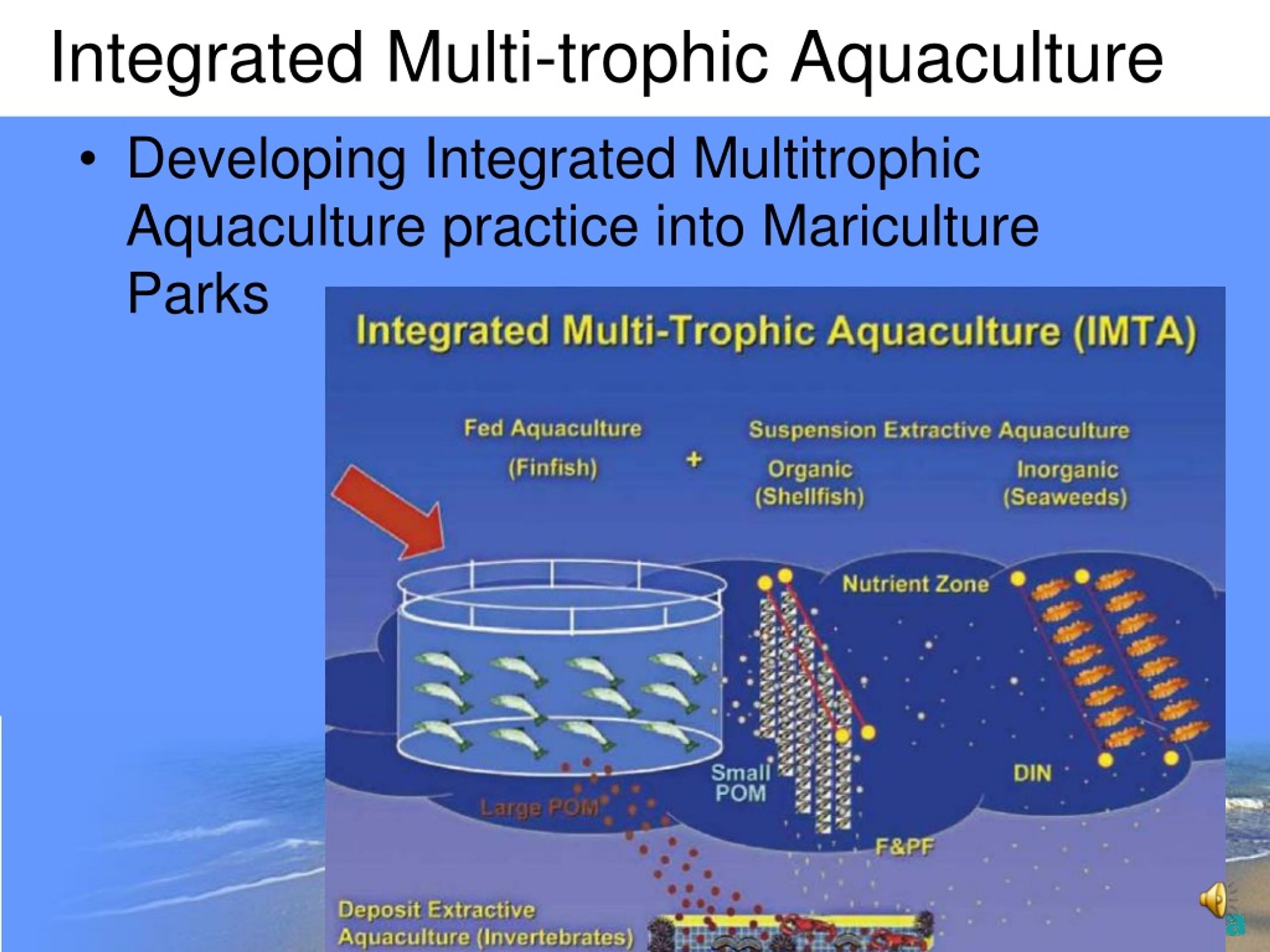
PPT Integrated Multitrophic Aquaculture PowerPoint Presentation, free download ID8736691
Integrated multitrophic aquaculture (IMTA) as an environmentally friendly system for sustainable aquaculture: functionality, species, and application of biofloc technology (BFT) Review Article Published: 03 August 2022 Volume 29 , pages 67513-67531, ( 2022 ) Cite this article Download PDF Aims and scope Submit manuscript Mohammad Hossein Khanjani,

Conceptual diagram of the integrated multitrophic aquaculture system.... Download Scientific
Integrated multi-trophic aquaculture (IMTA) with seaweeds improves abalone growth. • IMTA designs with high recirculation rates increase system pH. • Abalone growth was positively associated with pH levels in the IMTA system. • IMTA designs altered water chemistry and can reduce eutrophication. •
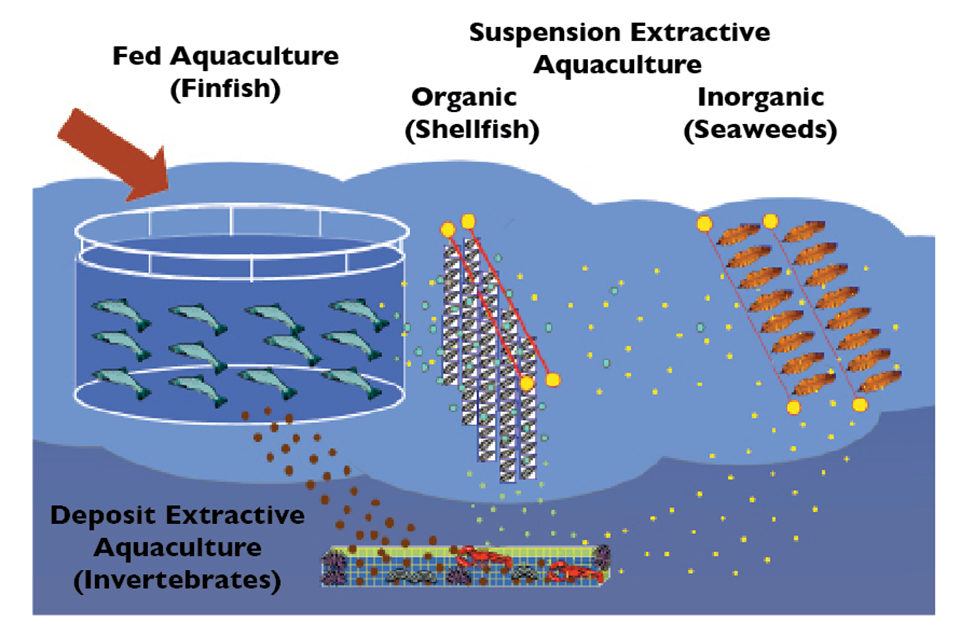
Integrated multitrophic aquaculture, part 1 Responsible Seafood Advocate
Integrated Multi-Trophic Aquaculture (IMTA) is the co-cultivation of species from different trophic levels on an aquaculture farm; from a theoretical perspective, the metabolic waste and uneaten feed from the top-level species like Atlantic Salmon is used by lower-level trophic species like shellfish and macroalgae, minimizing the potential impa.